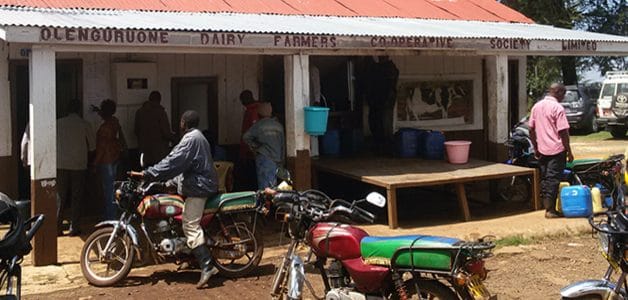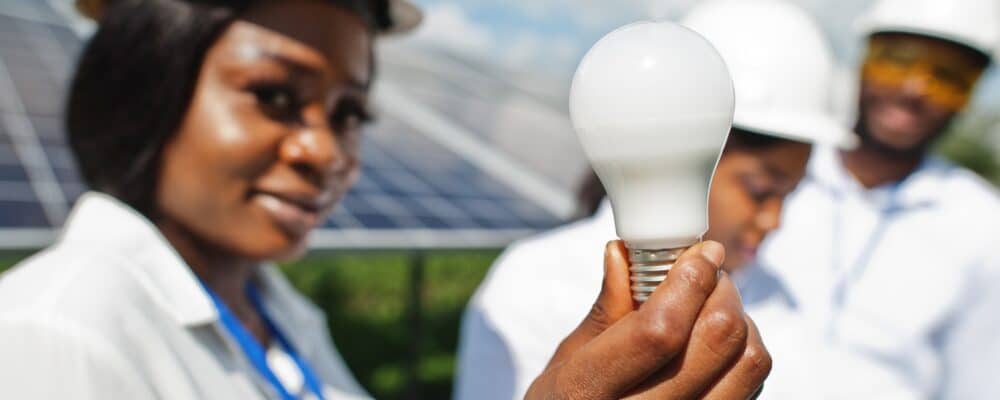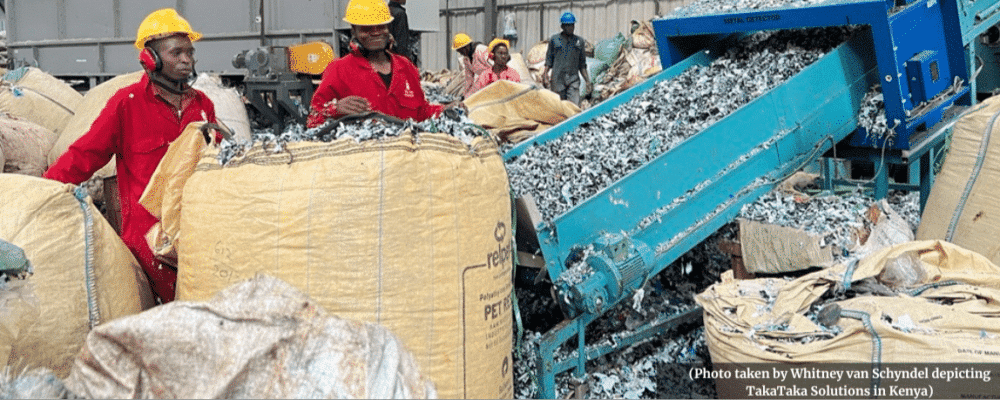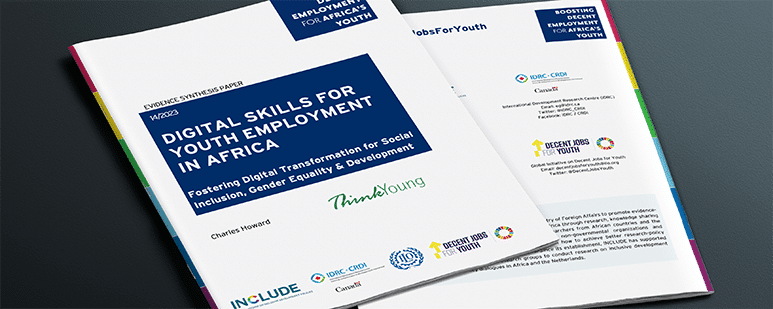
In 2010, Dutch policy for development cooperation was urged by experts to focus on agriculture as one of the areas where the Netherlands has an international comparative advantage. At the time, this prompted the minister in charge of development to make food security one of the spearhead themes for Dutch development cooperation to focus on. Since then this focus has been maintained.
In Kenya, one of the important partner countries of the Netherlands, agriculture and food security is a part of the Netherlands Embassy’s trade and development agenda. The food security programme focusses on dairy, horticulture (including potatoes) and aquaculture sub-sectors where it is felt that the Netherlands has something to contribute. This is part of a policy transition from aid to trade that is high on the agenda of the current minister for Foreign Trade and Development Cooperation, Minister Ploumen. The idea is that after the embassy phases out its current development programme, it will make way for a sustainable and inclusive trade relationship between Kenya and the Netherlands. In the meantime the Netherlands embassy focuses on economic development by trying to combine trade and development.
Dutch comparative advantage?
But does the Netherlands really have agricultural technology and expertise to share with countries like Kenya, let alone selling it commercially? The technology gap between what the Netherlands has to offer and what farmers and agribusinesses in Sub-Sahara Africa are able to pay for is huge. The Dutch agricultural sector has long been characterized by constant technological innovation in order to survive in agriculture.1 In countries like Kenya on the other hand, the “green revolution” hardly took off as agriculture is often the preserve of the poor, for whom innovation means risking the life of their children.2 Compare the image of Dutch innovations such as robotic milking parlours, energy neutral hydroponic glasshousesor recirculated industrial indoor fish ponds with the image that is typically still a reality in Kenya of an old mama digging her shamba (field) with a jembe (hoe) to feed her grandchildren. Dutch agri-technology cannot just be copy and pasted into Kenya. Shouldn’t we then leave this field to the Brazilians, Indians, Turks and Chinese who are better at developing appropriate technology for tropical agriculture?
Still I would like to argue that yes, the Netherlands could be relevant as a provider of agricultural technology and expertise for developing and emerging markets. However only if we have a focused and sustained approach to further develop our relevance as an international provider of agricultural technology and expertise to Africa. This cannot be done with only half-hearted subsidies to the private sector but it also requires committed public investment. It also means that we should make development cooperation what it once was —cooperation between people with similar professions from different cultures.
Dutch dairy development in Kenya
A great example of this reality in my view is how SNV works on dairy development in theKenyan Market-led Dairy Programme (KMDP), which is funded by the Netherlands Embassy. This is a programme that is generating concrete action on the integrated trade and development agenda. Perhaps controversially they do not work with the poorest dairy farmers yet rather they work with entrepreneurial small and medium sized (SME) dairy farmers and even large scale farmers with inclusive business models. For instance those marketing milk or providing fodder or other inputs to their smaller neighbours. The programme focuses on Kenya’s major milk sheds located in North Rift, Central and Eastern Kenya.
Within the programme, SME dairy farmers work together in cooperatives (farmer-led businesses) eighteen of which SNV supports. In these cooperatives extension officers and well-performing demo farmers are supported in the field by SNV Advisors with good and appropriate dairy and fodder production practices. They also undergo training at Practical Dairy Training Centres. These training centres are supported by SNV’s local capacity builders, Dutch trainers from Q-Point and the Dairy Training Centre and instruct on good farm practice, good training practices and marketing. During the week of training, for which farmers pay EUR 150, farmers make field visits to larger scale dairy demo farms to see the challenges of commercial dairy farming at a larger scale. For example in Eldoret, this happens by linking them to members of the Eldoret Dairy Farmers Association. Such medium and large scale farmers have often been neglected by government extension services and NGOs as they were considered able to take care of themselves yet they are struggling with farming as a business and often struggle to make a profit. At the same time they are important suppliers of nutritious milk and local employers. SNV with dairy development consultants from the Friesian and senior dairy experts from the Netherlands (PUM) support these larger farmers with dairy farming as a business. With this support these farmers can make their own investments, (which may be co-funded with bank loans) that will eventually create an economic (and social) return. As such, SNV works with a pyramid of entrepreneurial dairy farmers from small and medium to large.
Making the Dutch more relevant to the Kenyan market
The programme however is not just about capacity building on the side of Kenyans. Those days are long gone when we could presume people from the global North are the experts who simply transfer knowledge. Trade and development also means building the capacity of the Dutch private sector and knowledge centres to become more relevant to the Kenyan market. SNV’s KMDP is linked to the Dutch Dairy Development Partners, a consortium of companies and knowledge providers from the Netherlands that are interested in doing business in Kenya. Members of this consortium and other partners are offered the opportunity to discover the Kenyan dairy sector. With an introduction to the pyramid of Kenyan dairy farmers and processors, their first interest would be to develop business cases for the tip of the pyramid who have more capacity to invest. However as they are working in Kenya and with support from SNV and its partners, they can discover opportunities to innovate business cases further down the pyramid.
Innovating for the base of the pyramid
So what innovations has this approach led to? First Dutch experts have designed a modular cow house design funded by KMDP that focuses on cow comfort and improved productivity. The first design was suitable for large and medium sized farmers with a range of 20 to 80 lactating cows. Another example is a software package for herd management developed byUNIFORM-agri for farmers with 50 to 500 cows. Two young dairy experts, a Dutchman and a Kenyan, have tested this with ten medium-sized farmers in North Rift and Central Kenya at subsidized rates. The young Kenyan researcher has been offered a dealership to further unlock the market. For both of these innovations there are opportunities to develop these concepts further down the pyramid. How about a modular cow house design for smallholders with two to 18 cows? A herd management application on a smartphone for five to 49 cows could be successful in Kenya.
The challenge however is convincing Dutch companies to take a risk and invest. Africa is far and unfamiliar for many Dutch companies and risks are difficult to assess. Margins in agriculture are low and there is still a lot of trade potential in better known emerging markets. Yet those challenges are part of the trade and development agenda. The embassy and its partners encourage companies to seize opportunities on a daily basis.
Investing in expertise to generate private investment in African agriculture
The approach to modern development cooperation of supporting farmers in entrepreneurship has potential, however it may be challenging. The KMDP approach has inspired a similar programme in the horticulture sector (HortIMPACT) and in the aquaculture sector (under development). Also in Uganda, SNV is developing a dairy programme inspired by KMDP as part of the trade and development agenda of the Netherlands Embassy in Kampala. Does this approach have the potential to be replicated elsewhere?
To make the Dutch agenda of integrating trade and development in agriculture work, we need to further invest in the Dutch capacity to be relevant to the African market and in partnership with African professionals and their Dutch colleagues. After more than a decade of disinvestment, we have only recently begun to invest in development related agricultural knowledge. The knowledge infrastructure that we used to have was based on internationally renowned tropical agriculture institutes in Deventer and Wageningen. They (or their successors) are however currently less focused on applied knowledge and practical skills for Africa in comparison to past times. We have to reinvigorate and modernize this knowledge infrastructure with smart and visionary public funding and focus on developing and maintaining such knowledge and skills. PPPs and calls for proposals for fragmented standalone activities alone will not do.
We also have to recreate a breeding ground for young professionals.3 The tropical agriculture experts and practical development brokers with field experience are growing older and doing business is a matter of personal relations where development is the result of human interaction. Thus for trade and development we need to build experienced human resource to broker connections and unlock opportunities. The Young Expert Programme Agro-Food is a modest start to rebuilding appropriate expertise.
In short we have embarked on an exciting journey. It is a journey with potential, but not an easy one with quick fixes and quick wins. The willingness of the Dutch private sector to make risky investments in difficult markets such as African agriculture should not be overestimated. They should be encouraged and seduced. They should be able to avail themselves of appropriate expertise and market knowledge. Also we need more locally based Dutch professionals that working together with Kenyan partners, can see and seize opportunities that a Netherlands-based entrepreneur may miss. To create this knowledge infrastructure and expertise we need sustained public investment. As it has been said since the Dutch golden age, “de cost gaet voor de baet uyt” or to paraphrase with a fitting English saying, “you must sow before you reap”.










